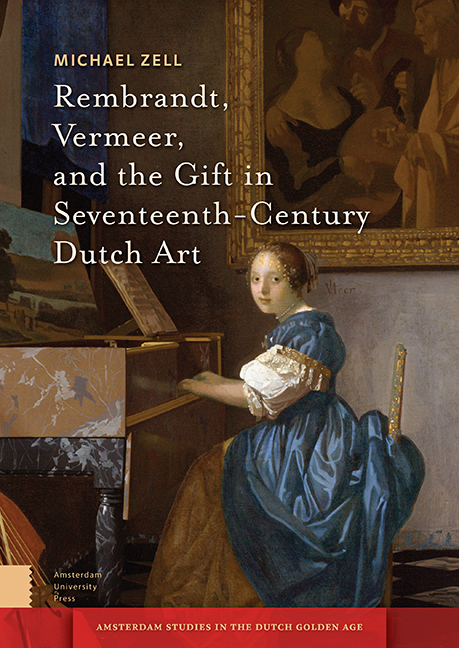Book contents
- Frontmatter
- Dedication
- Contents
- Illustrations
- Acknowledgments
- Introduction
- 1 The Gift and Art in Early Modernity
- 2 Art as Gift in the Dutch Republic
- 3 Rembrandt’s Art as Gift
- 4 Art and Leisure: Amateur Artists, Rembrandt, and Landscape Representation
- 5 For the Love of Art: Vermeer and the Poetics of the Gift
- Conclusion
- Bibliography
- Index
4 - Art and Leisure: Amateur Artists, Rembrandt, and Landscape Representation
Published online by Cambridge University Press: 21 October 2021
- Frontmatter
- Dedication
- Contents
- Illustrations
- Acknowledgments
- Introduction
- 1 The Gift and Art in Early Modernity
- 2 Art as Gift in the Dutch Republic
- 3 Rembrandt’s Art as Gift
- 4 Art and Leisure: Amateur Artists, Rembrandt, and Landscape Representation
- 5 For the Love of Art: Vermeer and the Poetics of the Gift
- Conclusion
- Bibliography
- Index
Summary
Abstract
This chapter identifies a correspondence between Dutch amateur art and the place of landscape in Rembrandt's artistic production, and in doing so illuminates the link between gift culture and the withholding of certain types of artworks from the domain of the marketplace. Dutch amateurs favored landscapes drawn from nature as a pastime, thus enacting interrelated ideals of art and leisure that also governed the status of landscape in contemporary art theory. This aestheticized social construct of sketching nature as a leisure activity also shaped the landscape art of prominent history painters, including Rembrandt, whose landscape drawings share close affinities with amateur landscapes. Rembrandt's sketching excursions in Amsterdam's suburban countryside, like those of Dutch amateurs, were not purely a commercial undertaking.
Keywords: Landscape Art; Rembrandt; Amateur Art; Leisure: Gifts; Gift Giving
Although famous for its thriving and dynamic art market, the Dutch Republic was also home to more amateur artists than anywhere else in seventeenth-century Europe, and many of them were talented artists. Favoring sketching landscapes from nature as a recreational pastime, these non-professional practitioners enacted intertwining ideals of art and leisure that governed the status of landscape representation in the early modern discourse on art. This social construct of sketching nature as a pastime or diversion also shaped the landscapes of prominent history painters, including Rembrandt, whose many landscape drawings of Amsterdam’s suburban countryside were made on sketching excursions sometimes in the company of his amateur pupils, and correspond in key respects with amateur landscape art. Drawn exclusively during the years he lived in a ruinously expensive house in a fashionable Amsterdam neighborhood, Rembrandt's sketches of identifiable sites along the Amstel River were rarely preparatory to more formal works, indicating that his sketching excursions, like those of Dutch amateurs, were not solely a professional or commercial undertaking. In Rembrandt's time, moreover, landscape sketches by famous painters were identified reflexively with the non-market ethics of gift exchange. In 1618 the English miniaturist and gentleman Edward Norgate commented that artists’ “first and sleight drawings,” specifically landscapes, are “things never sold but given to frends [sic] that are Leefhebbers [art lovers].” For Norgate, the early modern construct of landscape drawing as a recreation converged with the discourse of the gift to define the allure of artworks that lay beyond the reach of the market. The aestheticized social arenas of amateurism, landscape representation, and gift exchange, when seen together, therefore offer a conceptual framework to historicize and rethink a significant body of early modern artworks that defy categorization as either marketable productions or purely personal artistic exercises.
- Type
- Chapter
- Information
- Publisher: Amsterdam University PressPrint publication year: 2021



